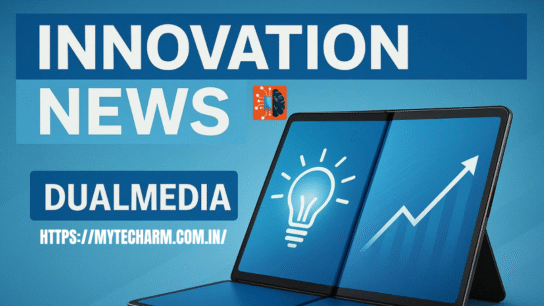There was a time when the concept of artificial intelligence belonged purely to the realm of science fiction. From sentient robots in space operas to self-aware computer programs in dystopian thrillers, AI seemed like a far-off fantasy that belonged on the big screen rather than in our homes. Fast forward to today, and AI is no longer fiction—it’s part of our everyday reality.
Artificial intelligence has subtly and profoundly reshaped how we live, work, and interact. Whether you’re asking a voice assistant for the weather, using facial recognition to unlock your phone, or receiving personalized recommendations on your favorite streaming platform, you’re already engaging with AI. The once-imagined future is here, and it’s seamlessly integrated into our lives in ways most of us don’t even notice.
The Quiet Revolution: AI in Everyday Devices
AI has become invisible yet essential. It operates in the background of countless applications and services. Smartphones, for example, use AI to enhance photography, predict text input, and power digital assistants. Smart home devices rely on machine learning algorithms to adapt to our routines—automating lights, adjusting thermostats, or even locking doors when we forget.
What makes this integration so remarkable is how AI has evolved from something highly complex and inaccessible into a user-friendly technology that can be embedded into consumer products. You don’t need to be a data scientist to benefit from AI—modern apps and platforms have made it as simple as tapping a screen.
The Rise of AI in Creative Tools
Beyond utility, AI is also transforming creative industries. Artists, designers, and marketers now use AI-powered tools to spark inspiration, automate tasks, and streamline workflows. These technologies are no longer limited to data analysis or automation—they’re creating art, music, videos, and more.
One of the most noticeable changes has been in the realm of content creation. From editing photos to generating music, AI is taking on the heavy lifting. This shift is especially evident in video production. What once required a team of editors, animators, and technicians can now be accomplished with smart apps that simplify complex tasks.
An excellent example of this evolution is how platforms like invideo AI are catering to niche needs. Invideo AI, for instance, includes features like an ai invitation maker, making it possible to design stylish, personalized event invites with minimal effort. This innovation has empowered individuals and small businesses alike to create professional-looking content without the need for advanced design skills.
The Everyday AI Assistant
AI-powered virtual assistants such as Siri, Alexa, and Google Assistant have changed how we access information and control our environments. These assistants do more than just respond to queries—they learn from user behavior, preferences, and usage patterns to offer a tailored experience.
Over time, these assistants have become more conversational and context-aware, blurring the line between human and machine interaction. What once felt like talking to a robotic script now resembles a fluid, intuitive conversation. Whether it’s setting reminders, translating languages, or controlling smart devices, AI assistants are proving indispensable for multitasking and efficiency.
Personalized Experiences in Entertainment
Another sphere where AI has had a transformative impact is entertainment. Streaming platforms use AI algorithms to analyze your viewing history and preferences to recommend content you’re likely to enjoy. These systems continuously learn and adapt, providing a more personalized experience over time.
Gaming has also embraced AI in both design and gameplay. Non-player characters (NPCs) are now more dynamic and lifelike, and procedural content generation allows for more varied and immersive environments. AI is helping developers create more complex, emotionally responsive gaming experiences, enhancing user engagement and satisfaction.
AI in Education and Learning
AI has also redefined how we learn. Online education platforms use AI to offer adaptive learning experiences—modifying the pace, difficulty, and content based on each student’s performance. These systems identify knowledge gaps, provide instant feedback, and help educators focus on what matters most.
Language learning apps, math tutoring tools, and exam prep platforms are increasingly relying on AI to deliver personalized lessons. With AI, learning is no longer one-size-fits-all. It’s targeted, efficient, and accessible—bridging gaps for students of all ages and backgrounds.
AI-Driven Healthcare Innovations
Healthcare has embraced AI in diagnostics, patient care, and treatment planning. AI algorithms can analyze medical images with accuracy comparable to human radiologists. Virtual health assistants help patients manage chronic conditions, while predictive analytics support early intervention strategies.
Moreover, wearable devices powered by AI monitor vital signs and physical activity, offering real-time feedback that can prevent health issues before they escalate. The integration of AI in healthcare is not just making treatment more effective but also more proactive and personalized.
The Role of AI in Business and Marketing
Businesses have been quick to adopt AI to gain a competitive edge. From chatbots handling customer queries to data-driven marketing strategies, AI is helping companies deliver better services and improve efficiency.
One particularly promising area is video marketing. Businesses are turning to ai video generator platforms to streamline the creation of branded content. These apps can transform scripts into engaging videos using templates, voiceovers, and even automatic scene selection. This helps marketers save time and reduce production costs while maintaining a high level of creativity.
AI’s ability to generate personalized video content at scale has become a game-changer in digital marketing. Whether it’s for social media, product demos, or internal training, AI-generated videos are proving to be a powerful communication tool.
The Ethical and Human Side of AI
As AI continues to permeate daily life, ethical questions and societal implications come to the forefront. Concerns around data privacy, job displacement, algorithmic bias, and transparency are becoming more pressing. While AI offers immense benefits, its implementation must be handled responsibly.
Public and private sectors alike are now focusing on creating guidelines and regulations that ensure fairness, accountability, and inclusivity. There’s also a growing emphasis on designing AI systems that are explainable and aligned with human values. Ultimately, the goal is to develop technology that augments human potential rather than replacing it.
Embracing the Future
Artificial intelligence has undeniably moved from fiction to fact, from fantasy to function. It’s no longer about robots ruling the world—it’s about making our world smarter, faster, and more connected. What was once considered futuristic is now a part of our morning routines, creative projects, and professional workflows.
As AI continues to evolve, it will likely become even more embedded in our daily experiences. The key is to remain informed, adaptable, and thoughtful about how we integrate this technology into our lives. In doing so, we’re not just witnessing the future—we’re actively shaping it.
Also Read: ArcyArt Blog: A Creative Hub for African Art, Artists, and Inspiration






